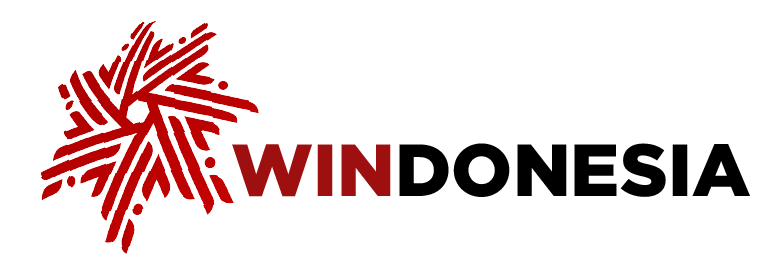Sector
Tourism
Indonesia has designated tourism as a primary sector with a strong commitment to integrated infrastructure development and the enhancement of skilled and quality human resources. In 2023, the realization of investment in the tourism sector was predominantly driven by domestic investment (PMDN), reaching Rp 14.9 trillion. The PMDN funds were allocated to various types of businesses, including Rp 8.228 billion for star-rated hotels in West Nusa Tenggara, Rp2.601 billion for tourism areas in DKI Jakarta, and Rp1.656 billion for restaurants in Bali.
View moreTourism
Indonesia has designated tourism as a primary sector with a strong commitment to integrated infrastructure development and the enhancement of skilled and quality human resources. In 2023, the realization of investment in the tourism sector was predominantly driven by domestic investment (PMDN), reaching Rp 14.9 trillion. The PMDN funds were allocated to various types of businesses, including Rp 8.228 billion for star-rated hotels in West Nusa Tenggara, Rp2.601 billion for tourism areas in DKI Jakarta, and Rp1.656 billion for restaurants in Bali.
Indonesia has identified 10 priority tourism destinations, including Borobudur, Mandalika, Labuan Bajo, Bromo Tengger Semeru, Thousand Islands, Lake Toba, Wakatobi, Tanjung Lesung, Morotai, and Tanjung Kelayang. Both domestic and international tourists constitute the country’s tourism market potential. In 2023, the number of foreign tourist visits reached 11.68 million, with the largest contributions coming from Malaysia, Australia, Singapore, China, and East Timor. This increase in visits also corresponds with the growth of tourism foreign exchange earnings, which reached US$6.08 billion in the first semester of 2023.
Major provinces attracting international tourists include Bali, DKI Jakarta, Riau Islands, West Nusa Tenggara, and East Java. Meanwhile, the number of domestic tourist trips in 2023 reached 749,114,709 trips, with DKI Jakarta, DI Yogyakarta, and East Java having the highest travel ratios.
Aside from the tourism sector, Indonesia’s creative economy sector has also shown significant growth, with exports reaching US$11.82 billion in the first half of 2023. The fashion subsector is the main contributor with US$6.56 billion (55.52 percent), followed by culinary products with US$4.46 billion (37.70 percent), and crafts with US$792.67 million (6.71 percent).
Moreover, the sector has realized US$225.28 million in foreign direct investment (FDI) and US$577.87 million in domestic direct investment (DDI) in the first quarter of 2023 out of the sector’s total target investment of US$2.68 billion in 2022. The Tourism and Creative Economy Ministry targets investment in this sector to reach US$6-8 billion, with the hope of creating 4.4 million new jobs in 2024. This investment fund is planned to be allocated for the development of five-star hotel accommodations in super-priority tourism destination areas (DPSP) and 10 other priority tourism destinations.
Meanwhile, realized investments in the tourism sector in 2022 amounted to US$2.33 billion. Furthermore, FDI also contributes significantly, especially reaching Rp8.7 trillion from Singapore amounting to Rp2.458 billion, followed by Hong Kong with Rp1.720 billion, and India with Rp1.385 billion.
Latest News
West Kalimantan Governor Ria Norsan confirmed that a new international flight route from Pontianak City, West Kalimantan to Kuala Lumpur, Malaysia will begin operating on Jan. 5, 2026. He conveyed the information after the governor received a visit from Lion Air Group Corporate Communations Strategic Danang Mandala Prihantoro at the West Kalimantan Governor's Office in Pontianak City on Dec. 29, 2025.
"Alhamdulillah, Batik Air, part of the Lion [Air] Group, has officially announced the opening of a new international flight route connecting Pontianak (PNK) directly with Kuala Lumpur (KUL), Malaysia by Jan. 5, 2026,. This strategic step is expected to spur economic growth and tourism in the region," said Ria.
He stated that the inaugural flight on this route by a Batik Air aircraft will fly from Kuala Lumpur to Pontianak on Jan. 5, 2026, and vice versa from Pontianak to Kuala Lumpur on Jan. 6, 2026.
"Initially, this service will be available three times a week. The aircraft [for this route] will undergo a remain overnight (RON) procedure, or stay overnight in Pontianak before returning to Malaysia the next day," she said.
Lion Air Group's Danang explained that this route is more than just a connection between two cities, it is also an international gateway for the people of West Kalimantan.
"By transiting in Kuala Lumpur, people from Pontianak now have direct access to more than 40 other international destinations," he explained.
Danang continued that several prime destinations that would be available for people completing the flight route include China's Guangzhou and Beijing, as well as East and South Asian routes such as Japan and India, and religious tourism destinations that provide easy access for Umrah travel.
In addition to international routes, Lion Air Group is committed to strengthening its domestic network in West Kalimantan to support inter-regional transportation mobility. Currently, Pontianak City is connected to other regions within West Kalimantan, such as the regencies of Ketapang, Kapuas Hulu, and Sintang.
Danang also emphasized that this transportation connectivity will be expanded to major cities in Indonesia, such as Yogyakarta, Surabaya, Semarang, Balikpapan, and Makassar. This integration of domestic and international routes is expected to provide tangible benefits for businesses and investors, particularly in facilitating investment access to West Kalimantan. The new flight route is also expected to benefit the tourism sector and streamline the flow of goods and services.
"Therefore, facilitating connectivity is considered a key factor in accelerating regional economic growth and providing convenience for the local community, both for family and business purposes," he concluded.

